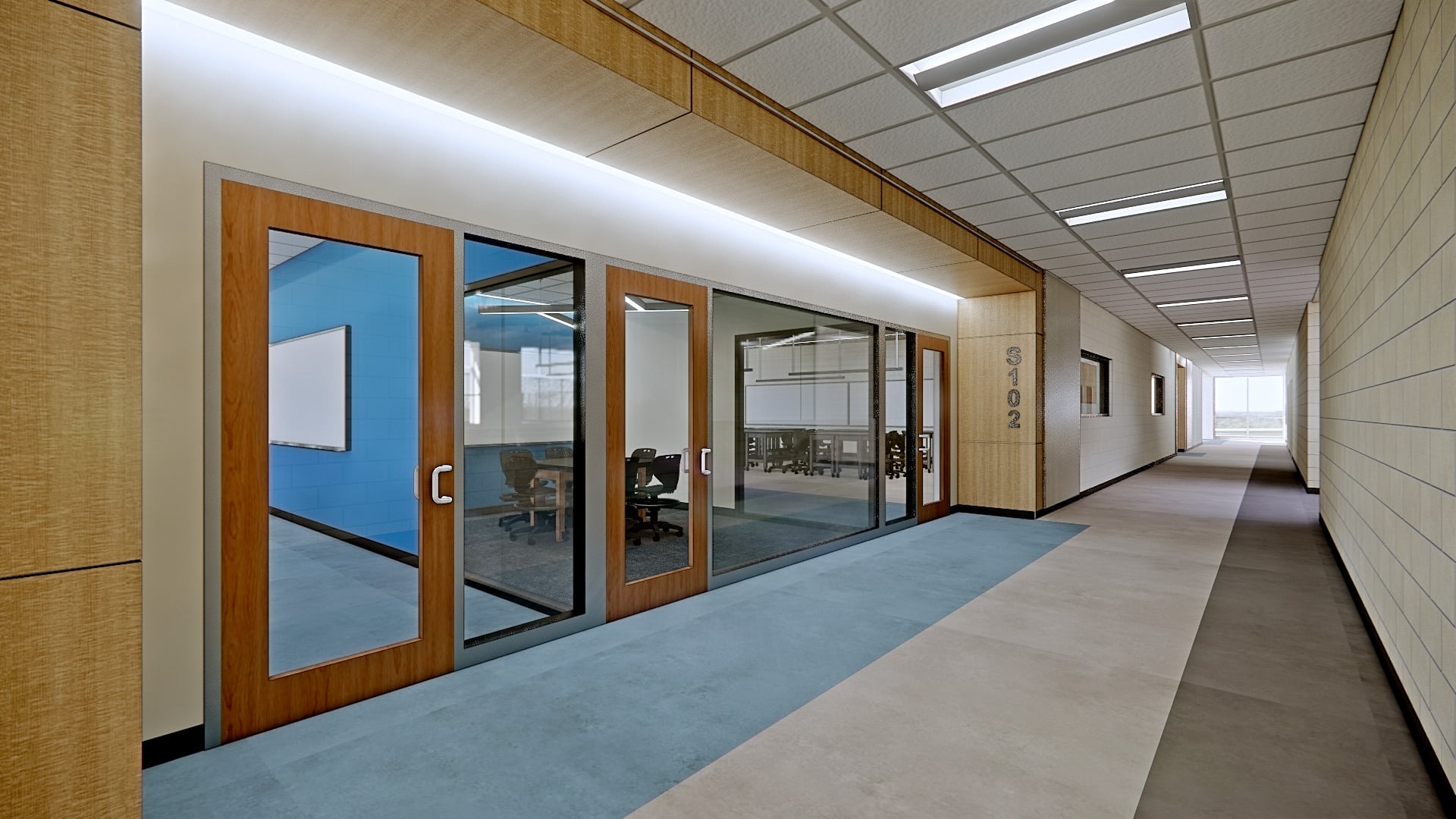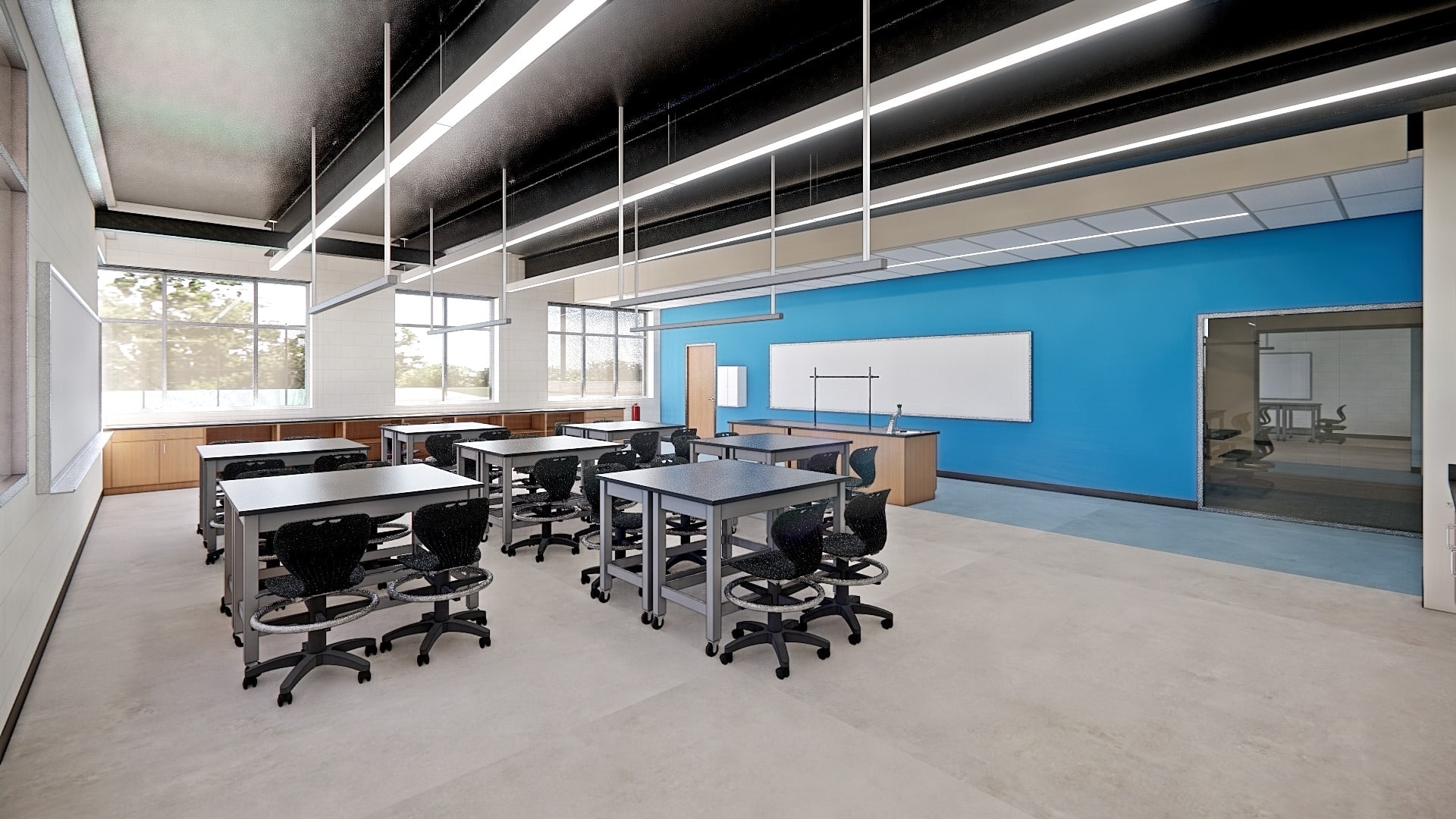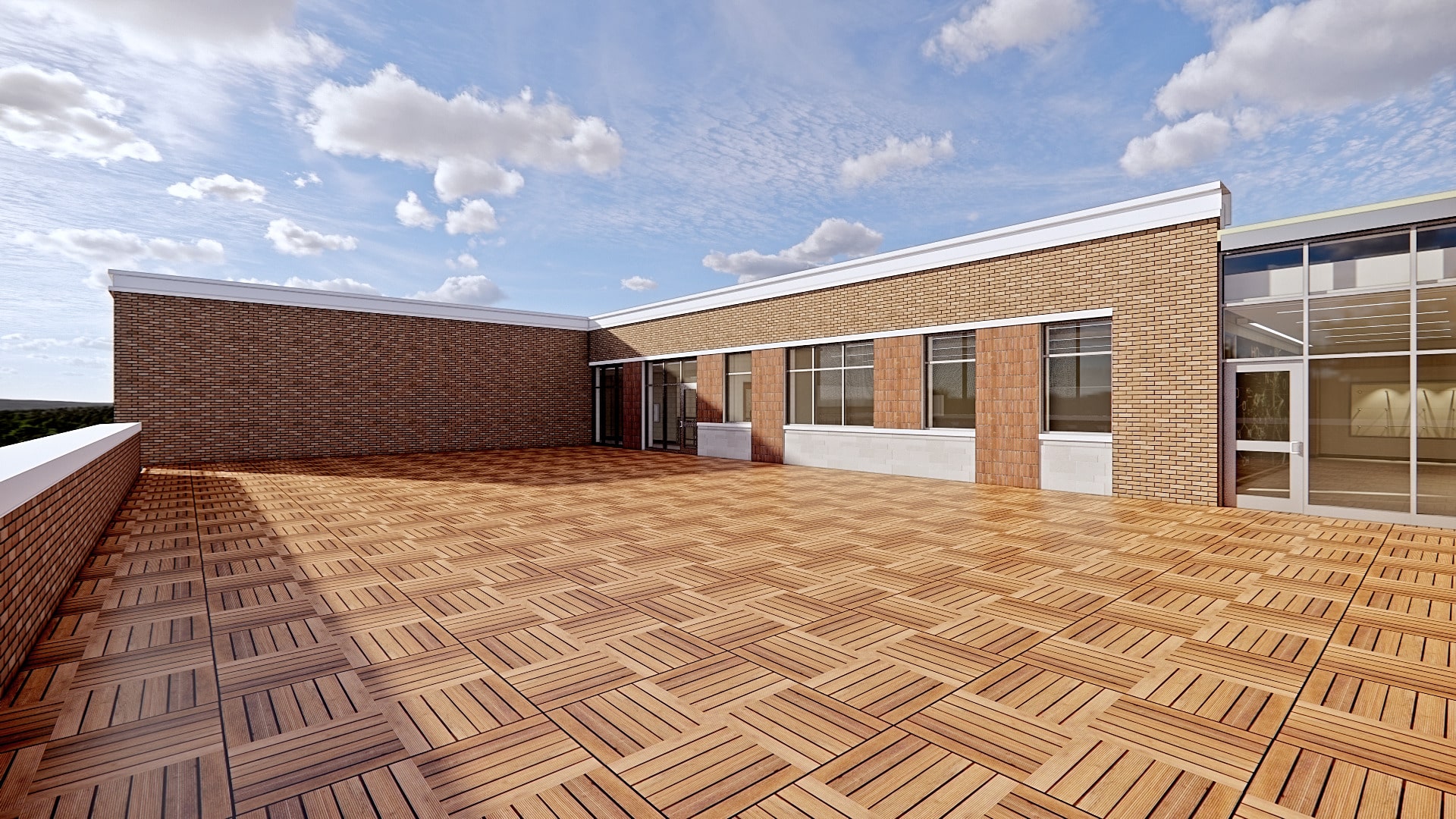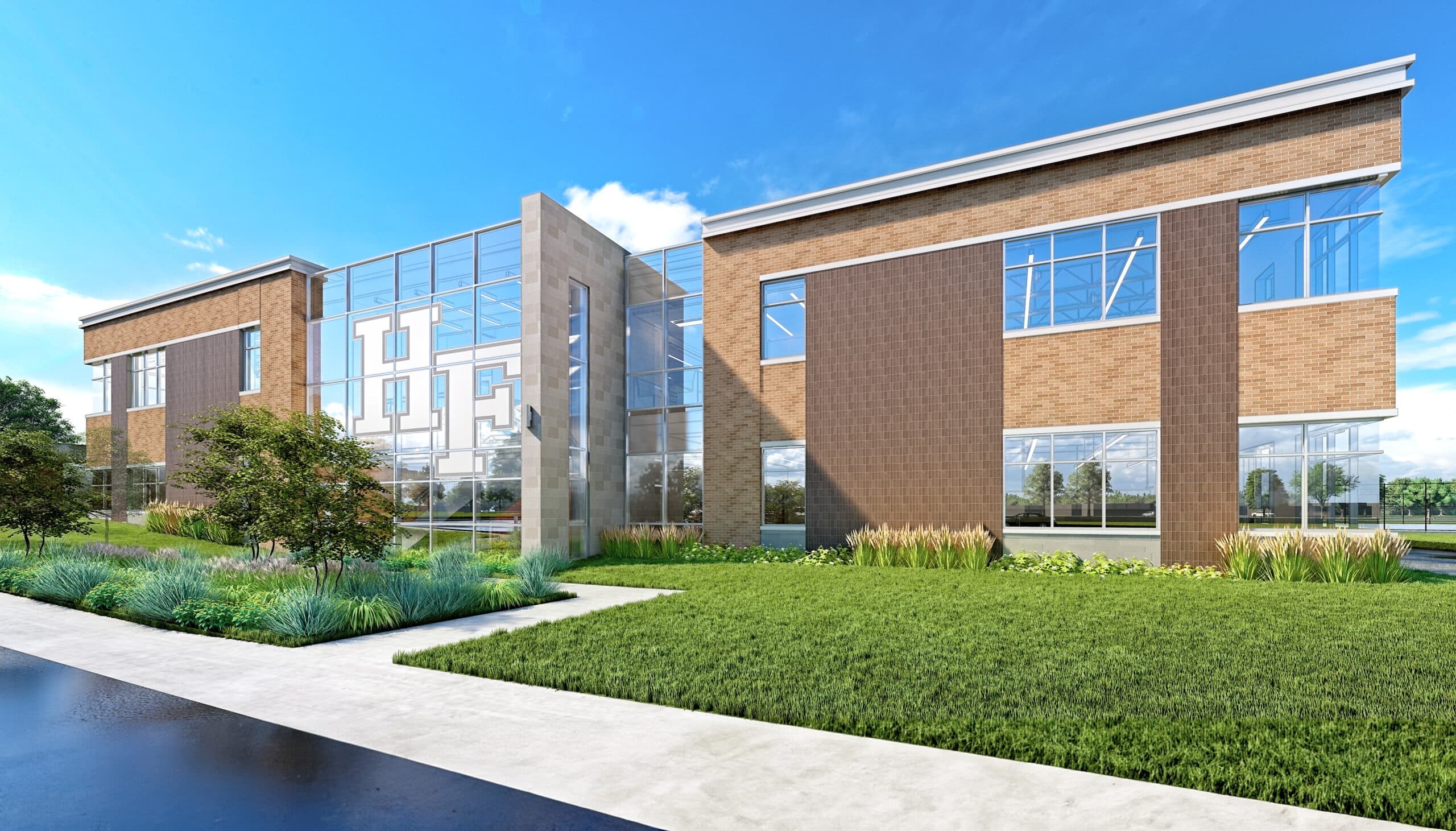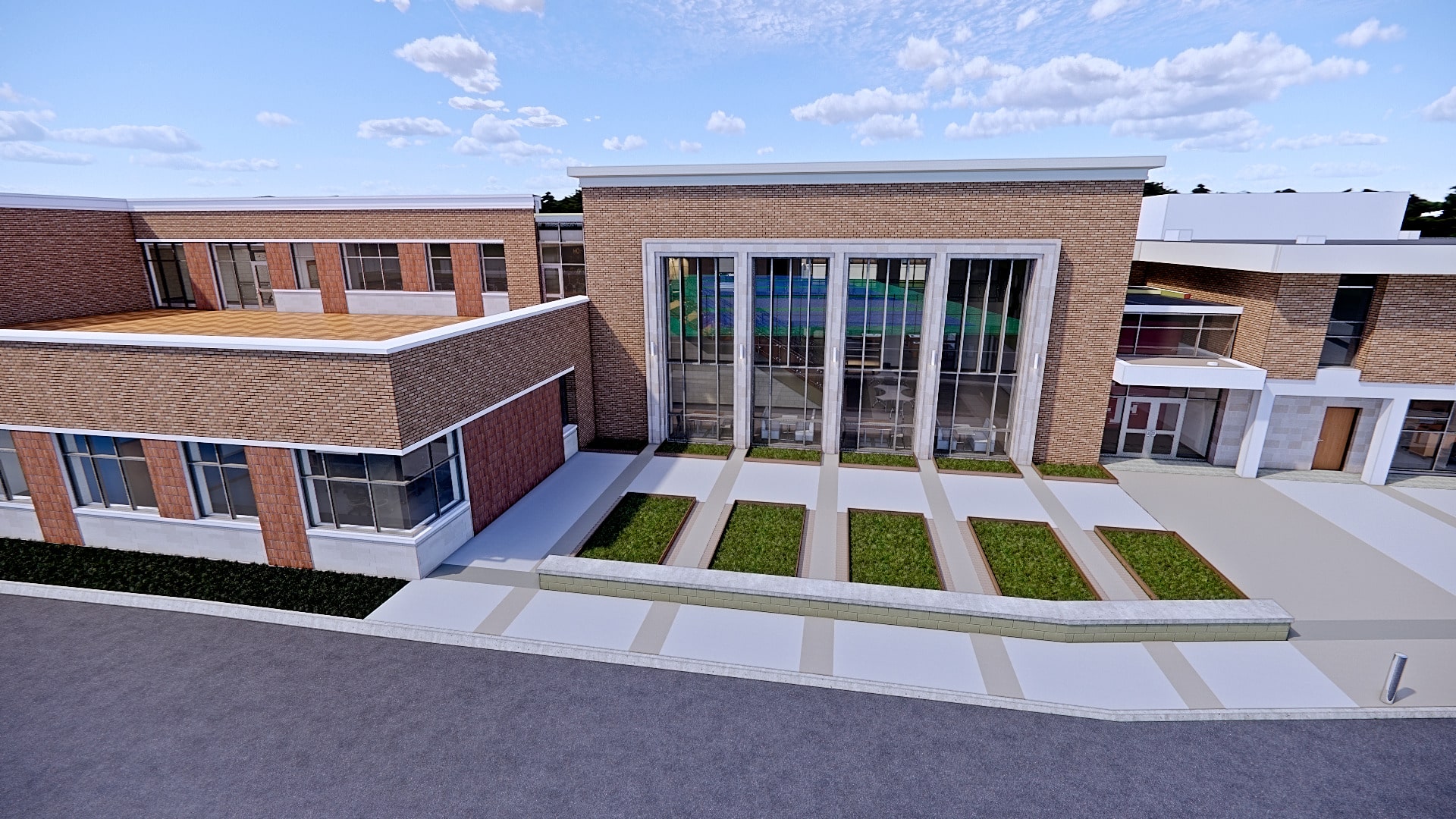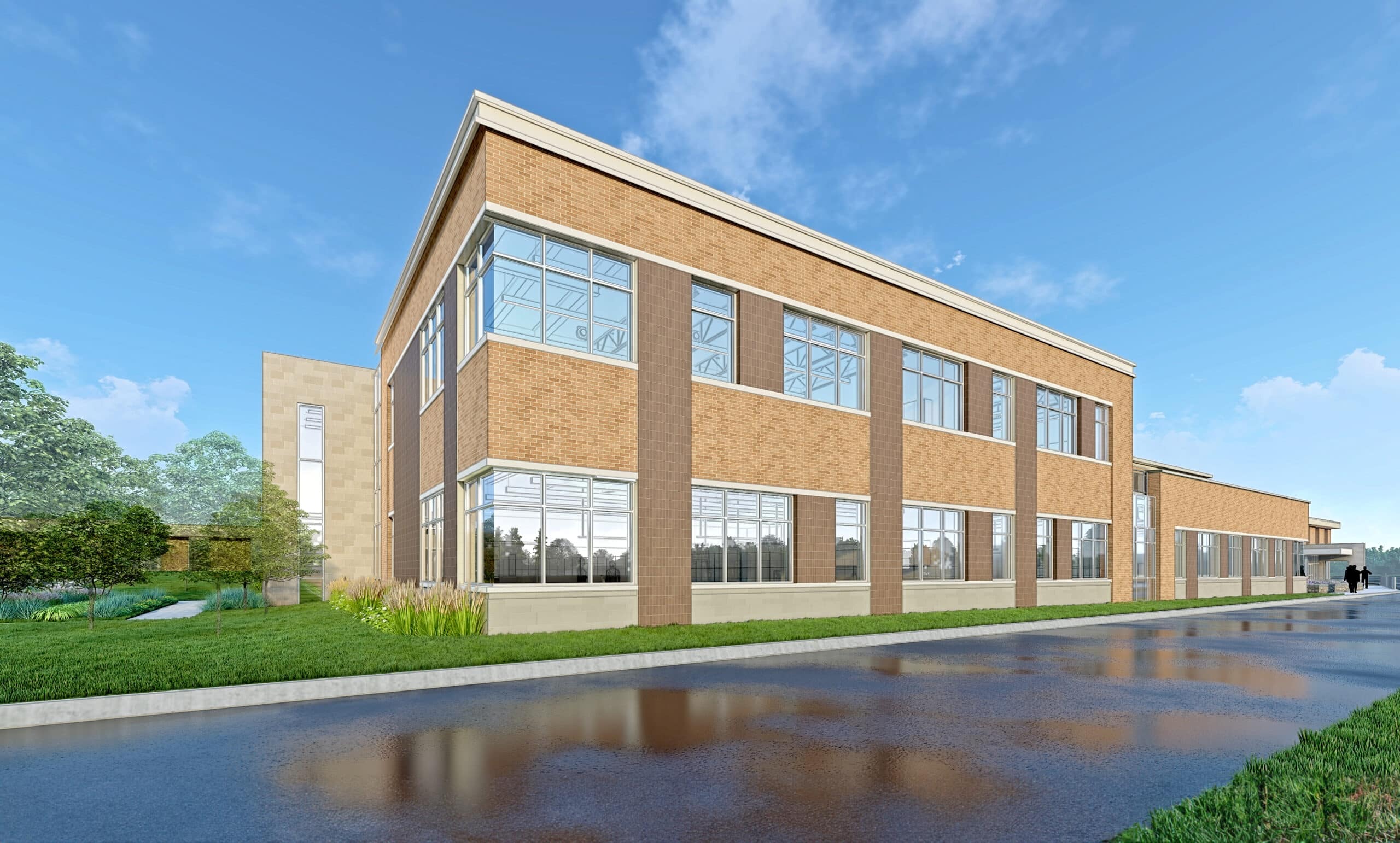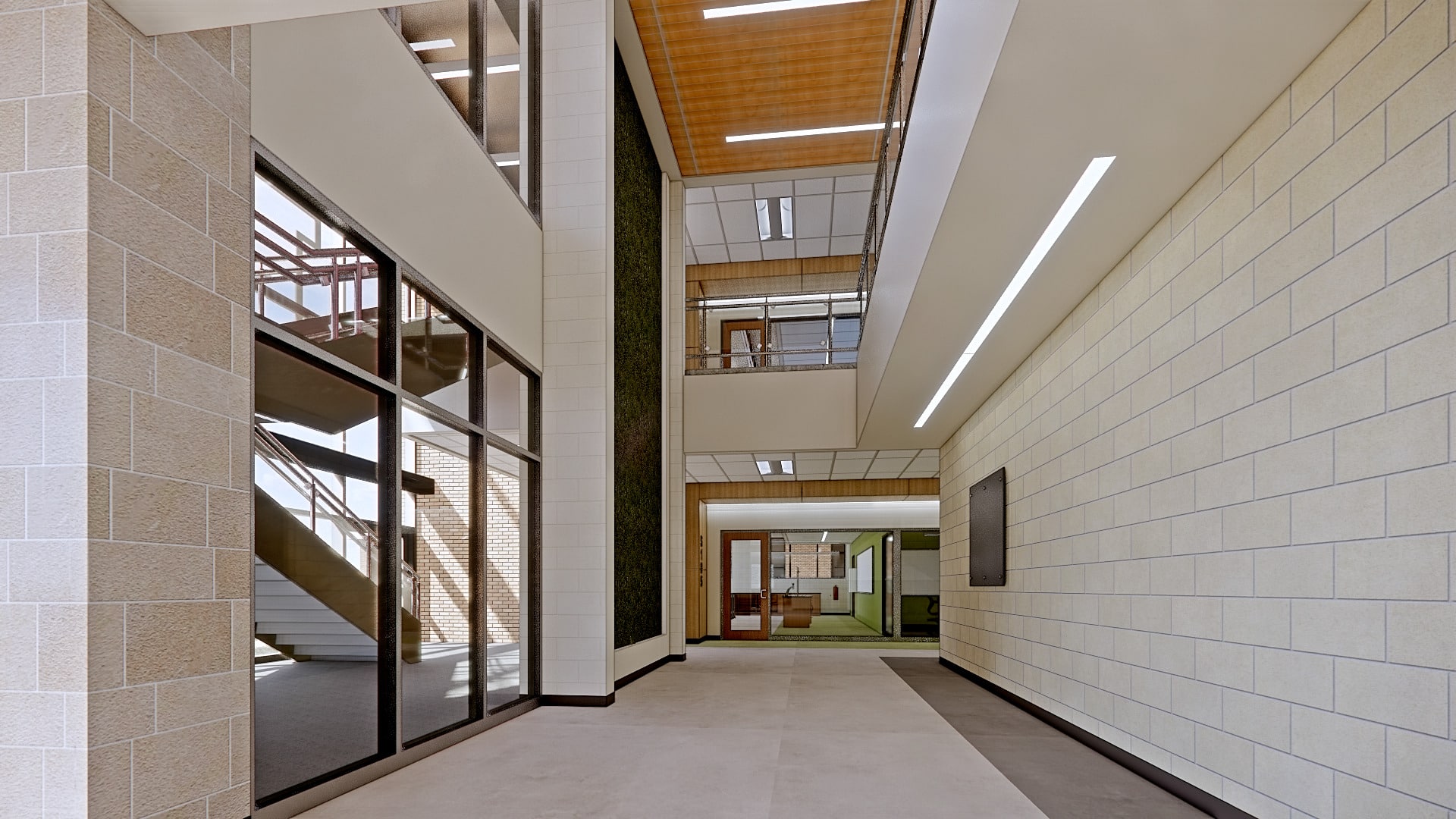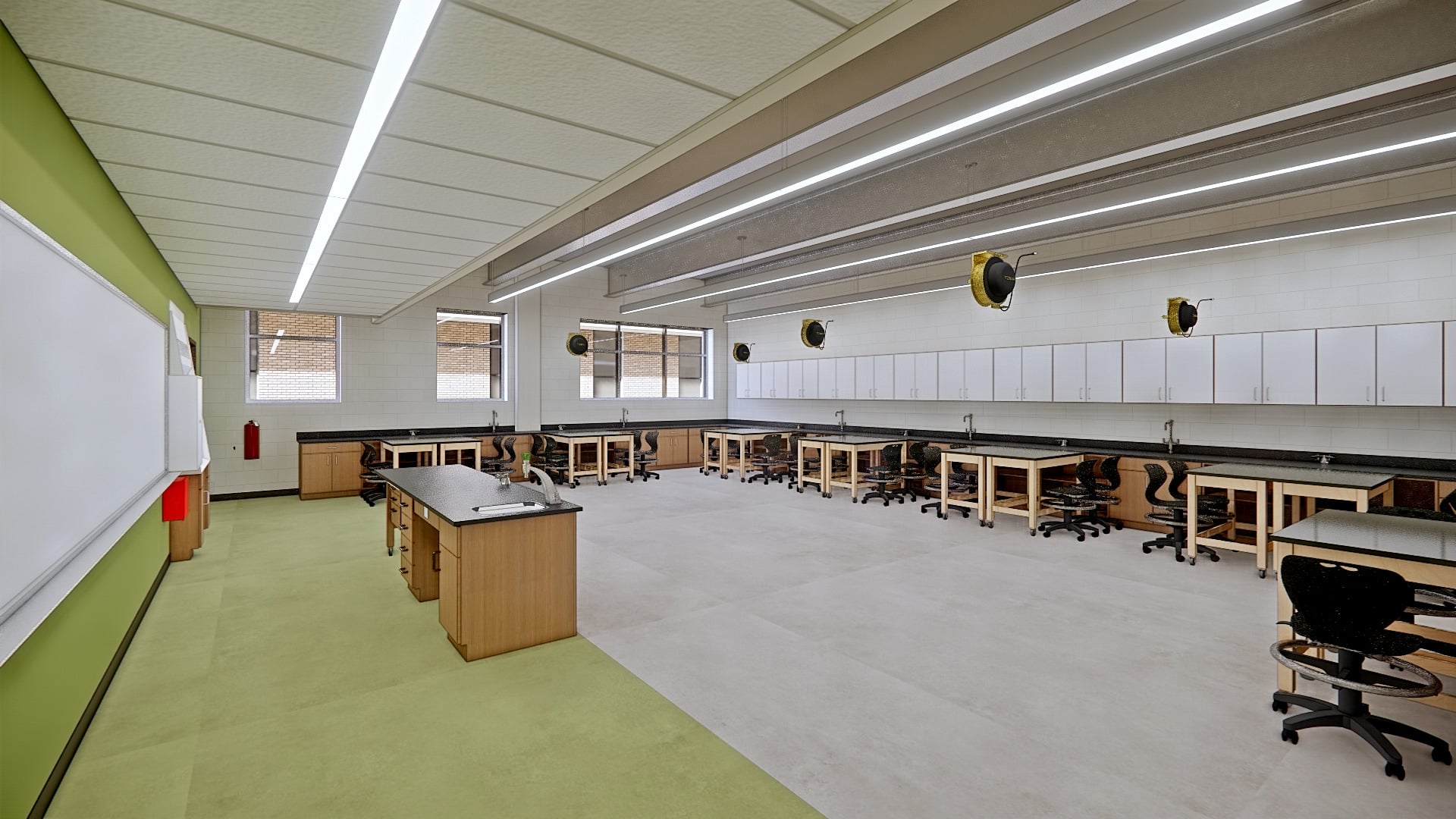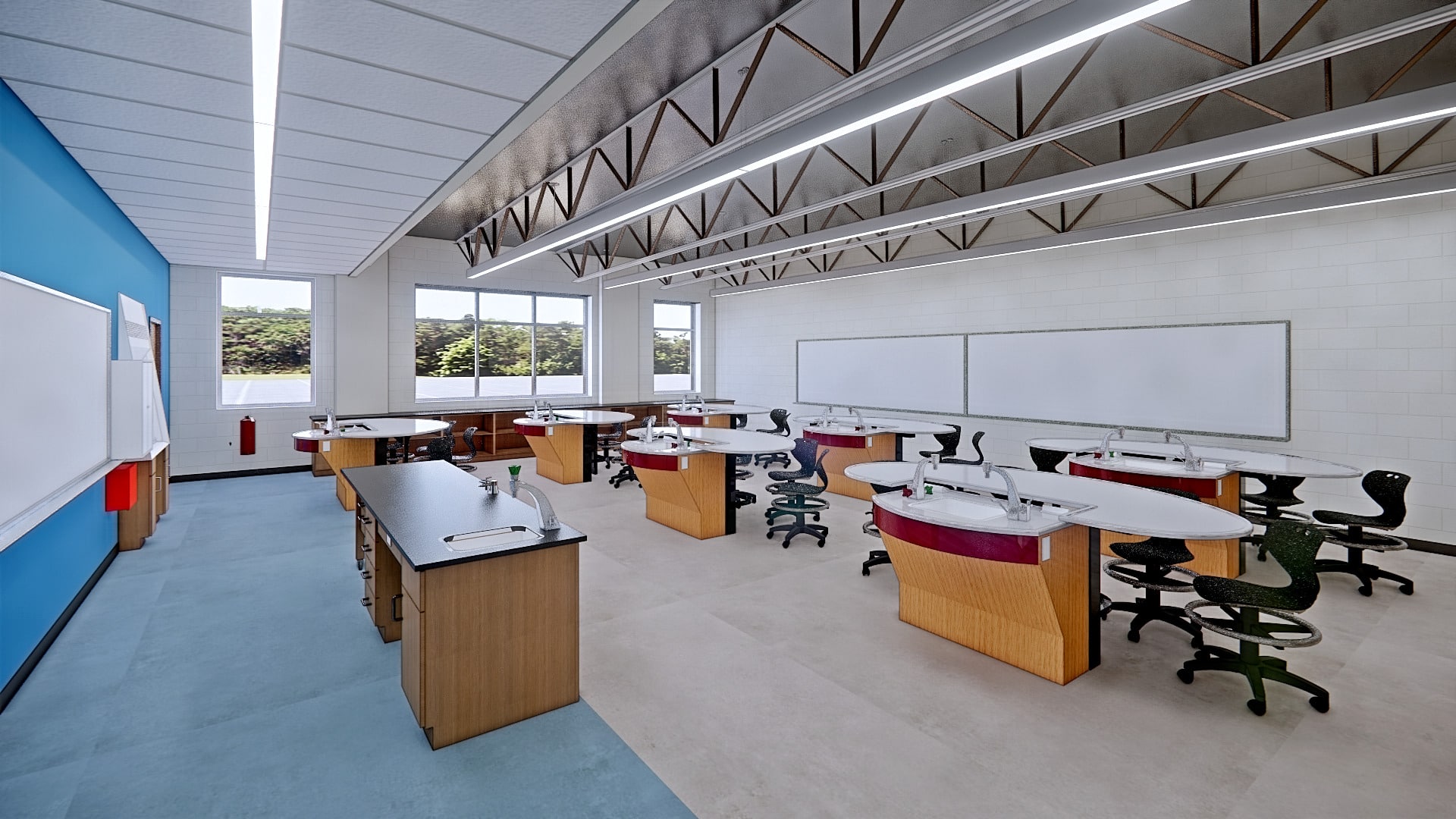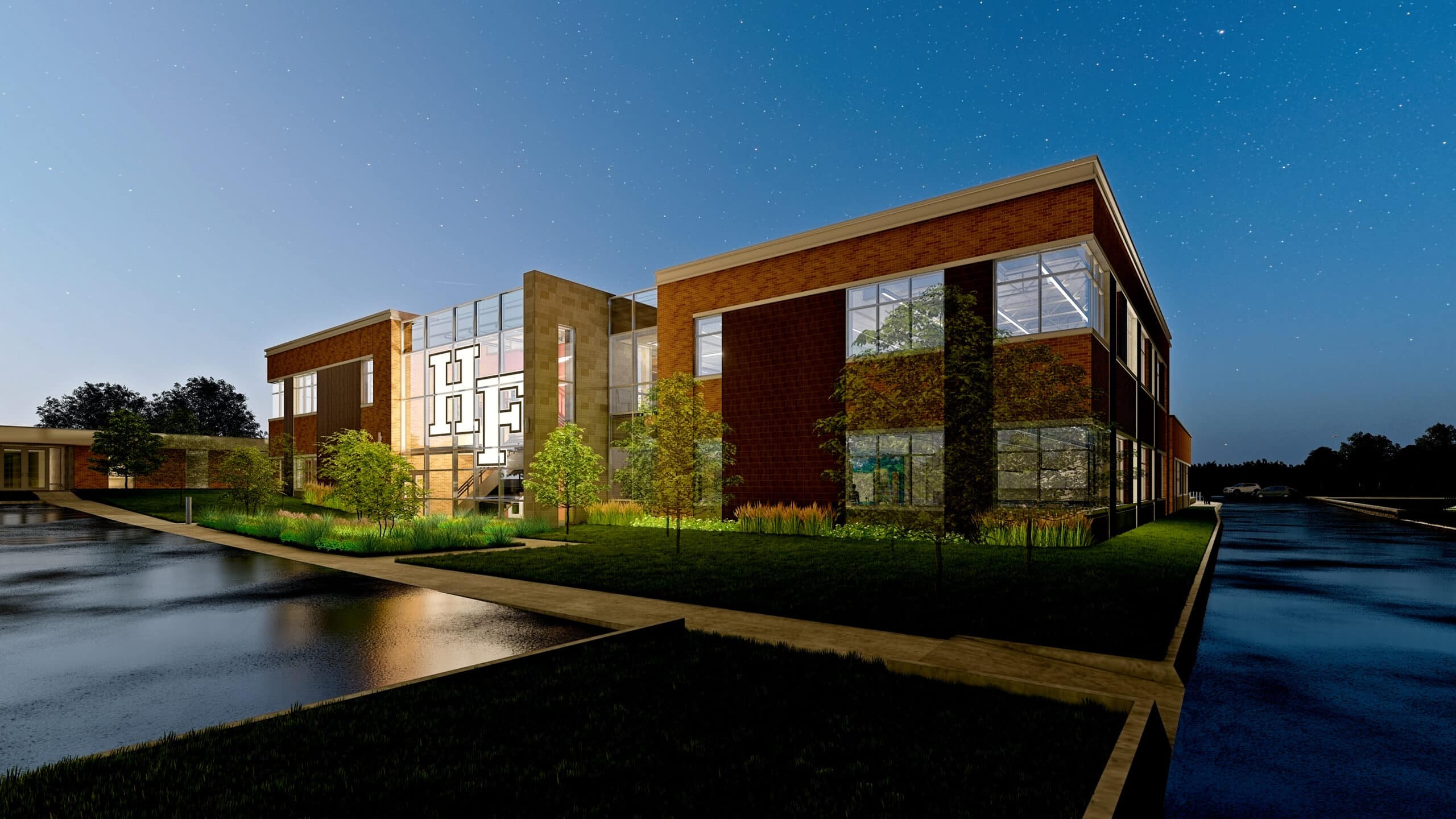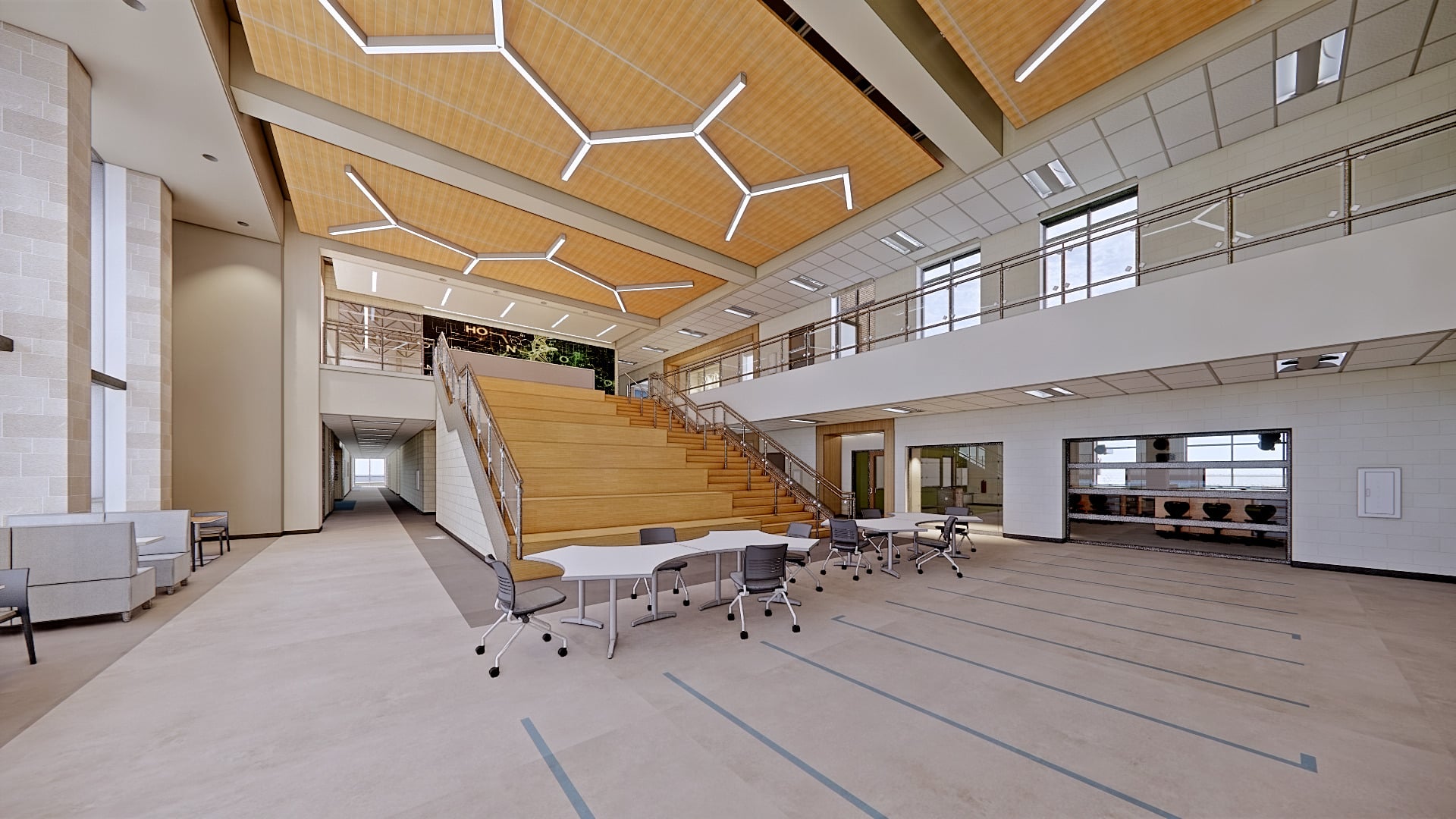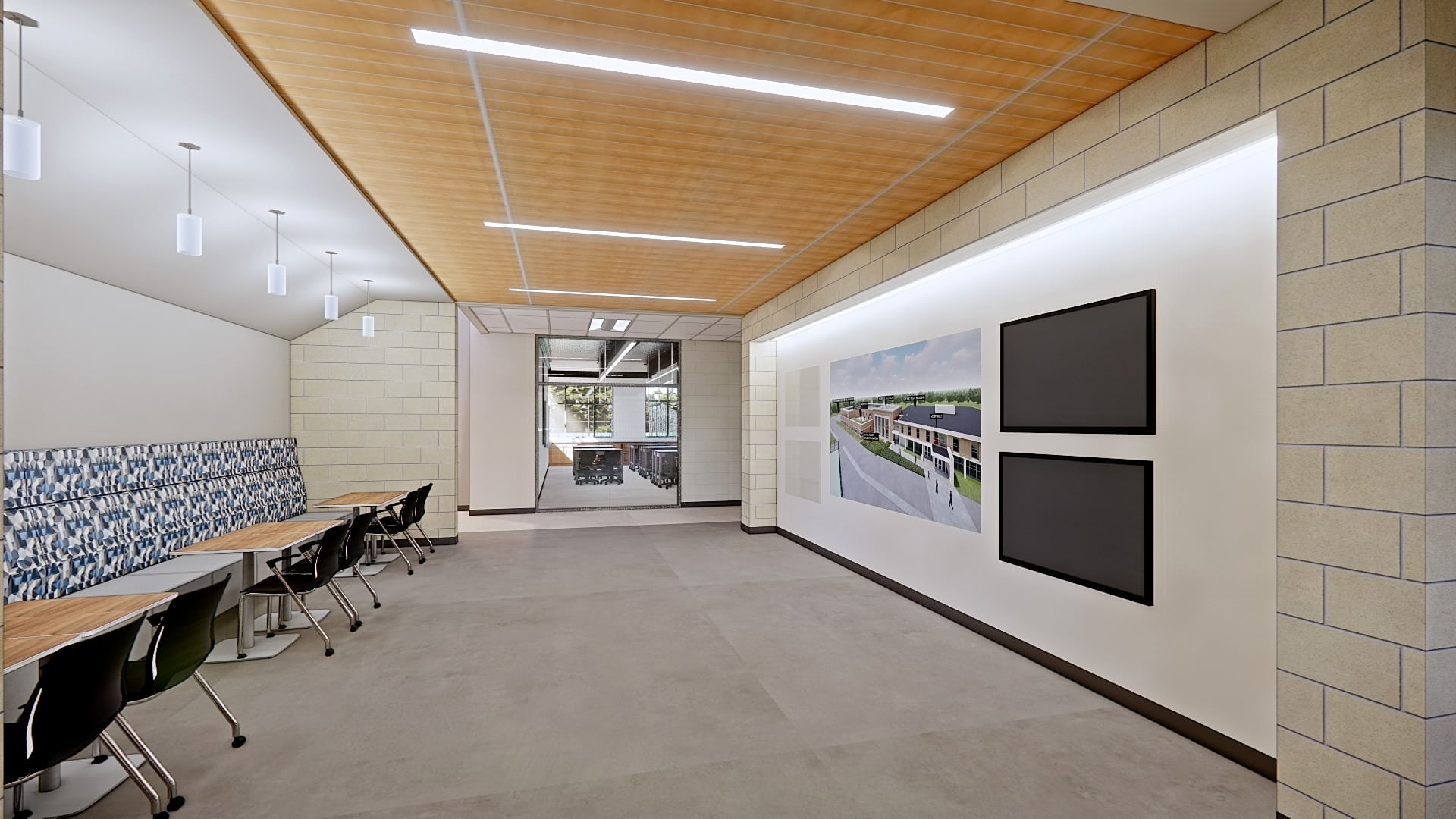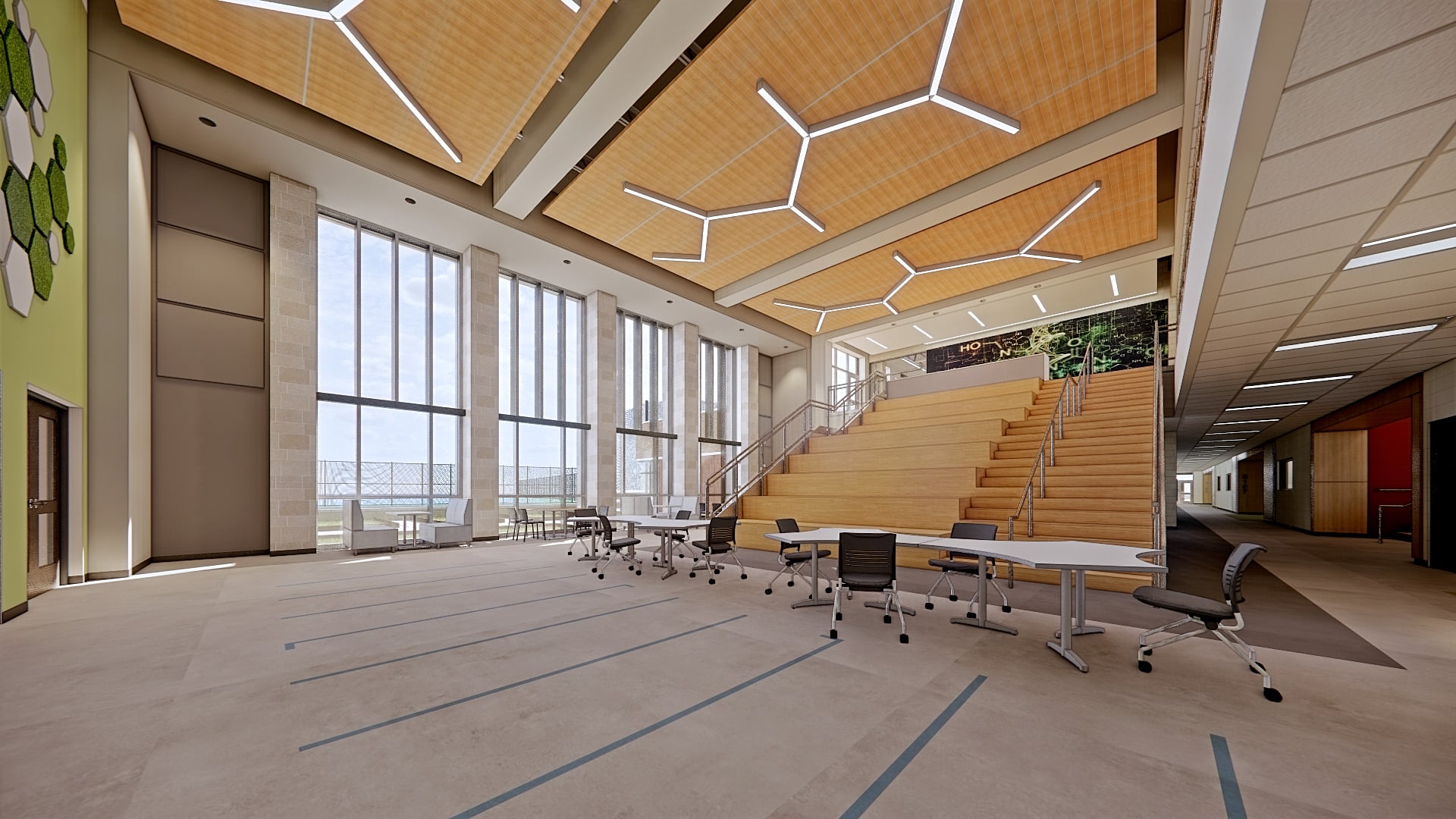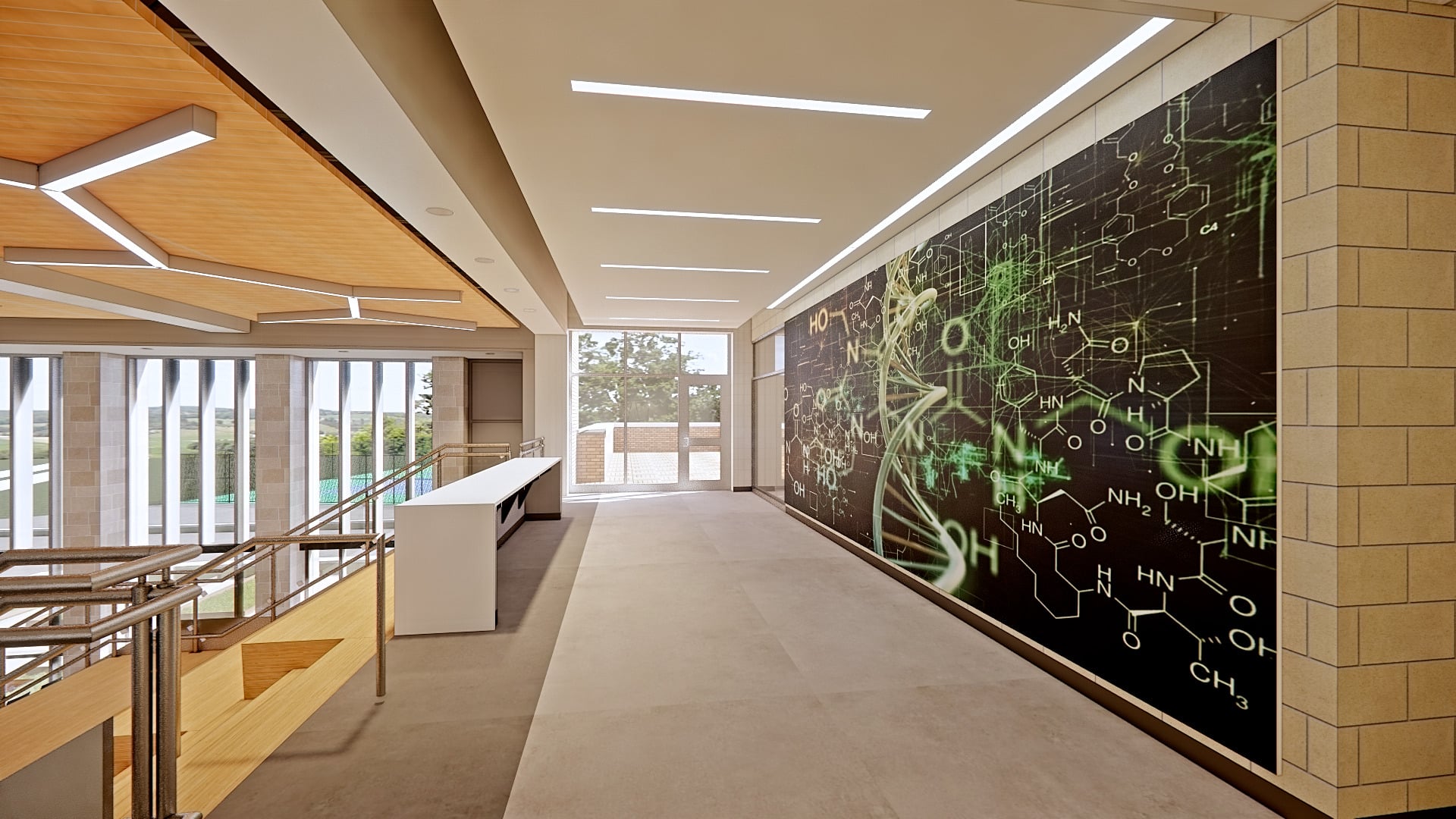Net Zero Science Addition and Renovations at Homewood-Flossmoor Community High School
The Homewood-Flossmoor Community High School Net Zero Science Addition and Renovation project is driven by a bold ambition: to generate as much energy as it consumes. This cutting-edge STEM facility will embody the H-F commitment to reducing carbon emissions and fostering an ethos of environmental responsibility. With an existing LEED Gold facility on campus, H-F’s school leaders aimed to further enhance efforts in educating, serving, and engaging students, staff, and the community in sustainable energy education. They know from experience the bottom-line benefits an energy-efficient facility offers. This new building is designed to be certified as a Zero Energy Building by the International Living Future Institute.
The primary objective of this project is to create an inspirational and functional environment that promotes STEM and sustainability education at Homewood-Flossmoor High School. By achieving net-zero energy in a large facility housing science and engineering classrooms, H-F establishes itself as an educational leader, not only through its curriculum but also through real-life experiences. The addition will consist of approximately 42,000 SF of new space and 12,000 SF of renovated space, designed to meet the evolving needs of students, educators, and the wider community. The building will provide state-of-the-art learning spaces that will inspire innovation, creativity, and collaboration.
One of the major components of the new Science Addition is the integration of sustainable design principles. The building will be designed to be Net Zero, which means that it will produce all the energy it needs. Achieving this will be made possible through an energy-efficient enhanced building envelope paired with a combination of geothermal and solar technologies. This will help reduce the school’s carbon footprint and inspire students to think about the importance of sustainability and environmental responsibility. The building itself will be a model for sustainable and energy-efficient building design for the staff, students, and greater community.
The building will also incorporate biophilic design principles, which seek to create connections between people and nature, helping to improve student well-being and productivity. For example, the use of natural light, outdoor learning spaces, and native plant gardens will create an environment that fosters curiosity and creativity, while also enhancing the overall learning experience.

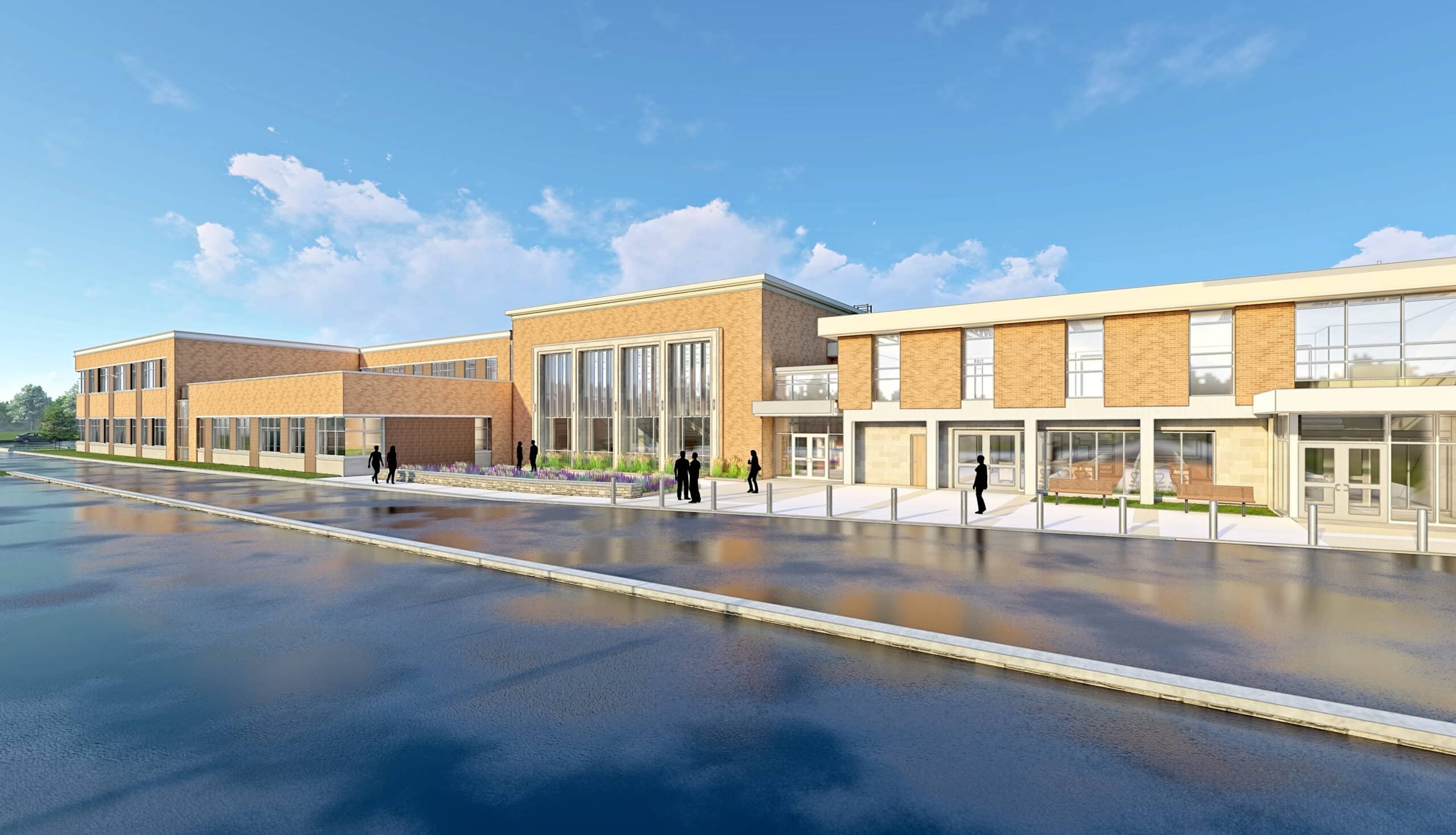
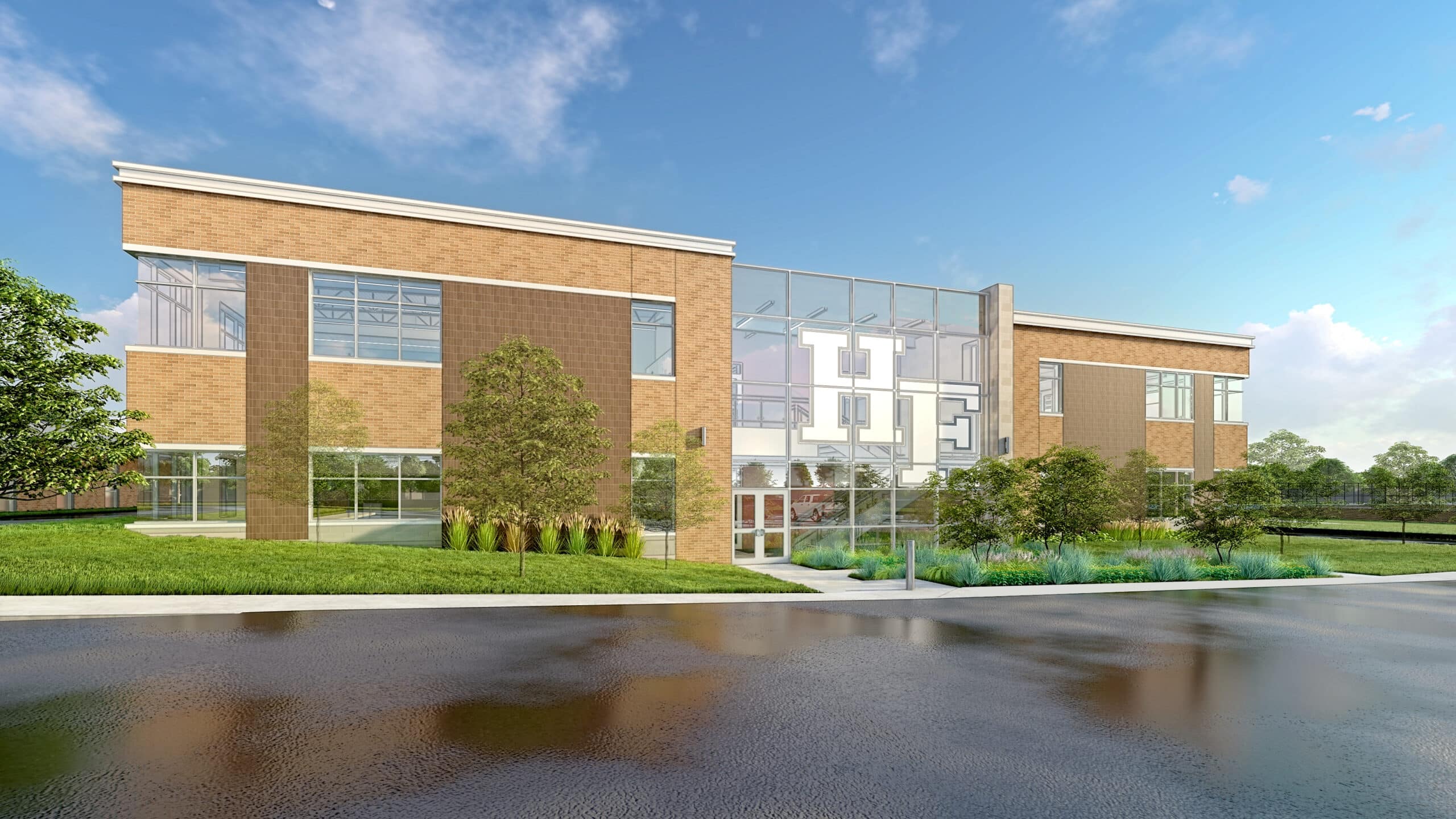
In addition to its focus on sustainability and biophilic design, the Science Addition will provide a range of new and updated learning spaces that will be used for science, technology, engineering, and mathematics education. The project will include 15 Science Labs, each with adjoining Prep Rooms and Break-Out Rooms, as well as a central Chemical Lab on the second floor. Equipped with cutting-edge technology and abundant resources, these modern labs meet the practical needs of science education while also inspiring students, fostering their curiosity and passion for learning. By incorporating functional and aesthetically pleasing design elements, the Science Addition creates a welcoming and stimulating atmosphere.
Connecting the Addition to the existing building will be a large Learning Commons with a Learning Stair, a Maker Space, and a College Engineering Lab. The Learning Stair will serve as a gathering space for students and teachers, while the maker space will provide a flexible environment for hands-on experimentation and prototyping.
To encourage interdisciplinary connections and collaboration, the project will also provide several gathering zones strategically placed throughout the building. These zones will serve as showcases for the benefits of inter-departmental and inter-disciplinary collaboration, highlighting the work accomplished by College Engineering, PLTW Engineering, and CTE courses. They will demonstrate how the skills acquired across these courses can be applied in real-world scenarios.
Another important aspect of the Science Addition is its use as a teaching tool. The addition will include a range of graphic or interactive displays and exhibits that will help educate students and the wider community about the principles of net-zero design and the integration of science into that process in an engaging and informative manner. By fostering a deeper understanding and appreciation for science, the Science Addition paves the way for a new generation of innovators.
Overall, the Homewood-Flossmoor Science Addition represents a major investment in the future of STEM education at Homewood-Flossmoor High School. As a demonstration lab for sustainability, biophilic design, and interdisciplinary connections, the project will help prepare students with the skills and mindset needed to tackle the challenges of the future and inspire them to become leaders in science, technology, engineering, and mathematics.
